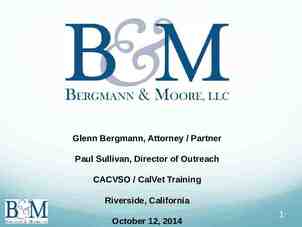Introducing Positive Psychology
19 Slides1.44 MB
Introducing Positive Psychology
PowerPoint presentation labels for practitioners group exercise individual exercise exercise in pairs 12 page of exercise in workbook
Introducing Positive Psychology History of PP roots in humanistic Psychology (50’s) a holistic approach to human existence meaning, values, freedom, personal responsibility, human potential e.g. Abraham Maslow, Carl Rogers
Introducing Positive Psychology History of PP reaction to behaviourism & psycho-analysis problem: lack of rigorous methodology success in self-help area, not at universities philosophy rather than psychology PP: approach of humanistic psychology, but with scientific methodology
Introducing Positive Psychology Seligman & Csikszentmihalyi (2000, p. 5) ” “Psychology has, since World War II, become a science largely about healing. It concentrates on repairing damage within a disease model of human func tioning.”
Introducing Positive Psychology A focus on weakness ? “What is wrong with people?”
Introducing Positive Psychology A focus on weakness ? “Which factors impair human functioning?”
Introducing Positive Psychology A focus on weakness Psychological Abstracts (1967-2000): anger: 5,584 anxiety: 41,416 depression: 54,040 joy: 415 happiness: 1,710 life satisfaction: 2,582 Ratio: 21/1
Introducing Positive Psychology A focus on weakness -5 0 5
Introducing Positive Psychology Misconceptions about weaknesses misconception no #1: fixing what is wrong automatically leads to well-being positive affect and negative affect are not on the same continuum getting rid of anger, fear, and depression will not automatically cause peace, love, and joy the absence of mental illness does not imply the presence of mental health (and vice versa)
Introducing Positive Psychology Misconceptions about weaknesses -5 -5 0 5 0 5
Introducing Positive Psychology Misconceptions about weaknesses misconception no #2: effective coping is reflected by a reduction of negative states e.g. it is not the absence of stress that is related to successful weight maintenance, but rather the ability to effectively deal with stress
Introducing Positive Psychology Misconceptions about weaknesses misconception no #3: a weakness focus can help to prevent problems When it comes to prevention, the question should not be “How can we treat people with problem X effectively?”, but “How can problem X be prevented from occurring?” “Why do people suffer from problem X?” vs “Why do some people flourish despite difficult circumstances?”
Introducing Positive Psychology A focus on strengths Martin Seligman “Positive Psychology is the scientific study of optimal human functioning that aims to discover and promote the factors that allow individuals and communities to thrive.”
Introducing Positive Psychology A focus on strengths ? “What is right about people?”
Introducing Positive Psychology A focus on strengths ? “Which factors promote human flourishing?”
Introducing Positive Psychology A focus on strengths -5 0 5
Introducing Positive Psychology Critical notes ignoring weakness will not promote wellbeing PP is an addition to the field, not a replacement “negative” psychology does not exist psychology reaches far beyond the subdomains of psychopathology and
Thanks for your attention
























